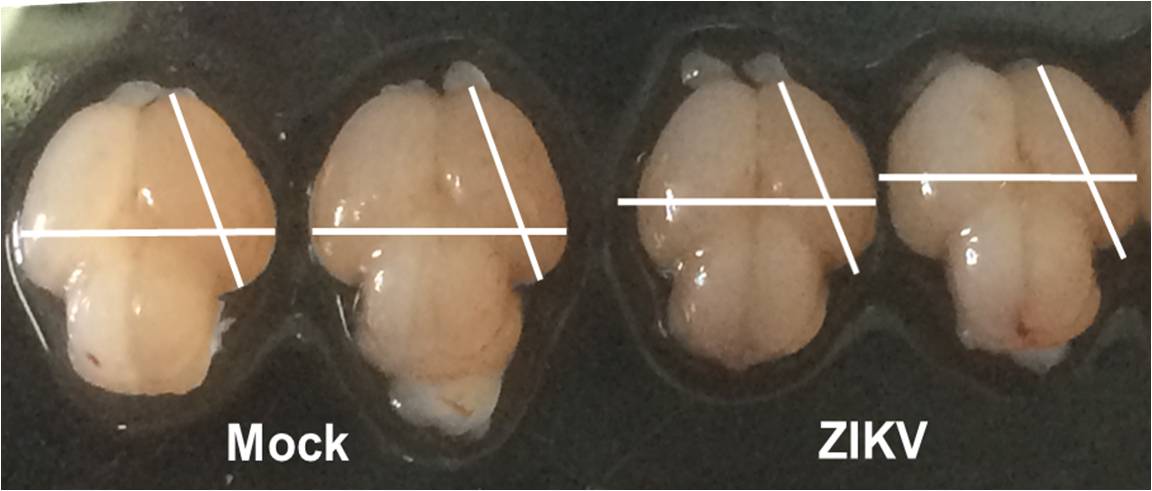


photo by institute of genetics and developmental biology, cas
Chinese neurobiologists and virologists have worked together using mice to study the Zika virus infection and its relation to microcephaly and say they have identified a direct link in an online publication by the leading academic journal Cell Stem Cell, on May 12.
Some previous epidemiological surveys thought they had found a close link between the Zika virus and microcephaly in newborn infants, but lacked the backing of scientific evidence.
But, now, this latest study, led by Xu Zhiheng, principal investigator of Institute of Genetics and Developmental Biology, Chinese Academy of Sciences(CAS), and Qin Chengfeng, research associate of Institute of Microbiology and Epidemiology, Academy of Military Medical Sciences, provides animal models of microcephaly caused by the Zika virus, laying a good foundation for further studies on the pathogenesis and treatments of the disease.
Xu explained “We used a fiberglass needle to inject the Zika virus into mouse fetuses and, after three days, we discovered that the Zika virus increased more than 300-fold. Moreover, the virus infected neural stem cells, inhibiting their growth and differentiation.” He went on to say that, five days later, neurons in the brain of the mouse fetus began to die in large quantities and, “Later on, we dissected the heads of the mice and found enlarged ventricles along with thinning of the cerebral cortex -- typical signs of microcephaly.”
The two also analyzed the genome-wide profiles of the Zika-infected mice and those of healthy “siblings” and Xu noted “We discovered that many development-related genes showed abnormities after infection by the Zika virus. Now, the next step is for us to keep watch over the ’patients’ for a period of time to look for similarities and differences in the microcephaly caused by the Zika virus and other conditions.”
In conclusion, Qin added “We look forward to developing drugs for the prevention and treatment of the disease as well as related vaccines.”